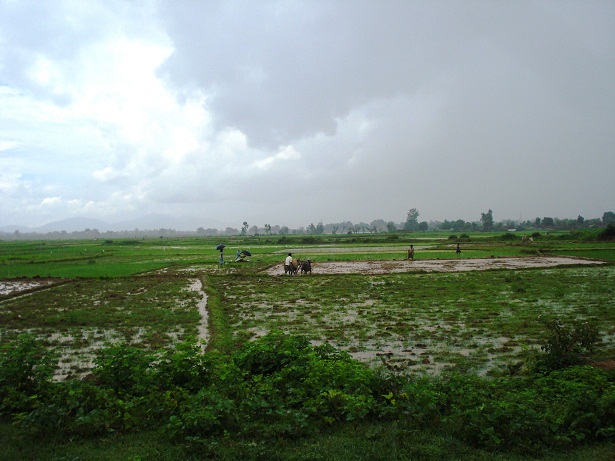Below are
few of the major aspects about the disabled in rural India which sets them
apart from their counterparts in towns and cities.
1.
The hardworking villagers in the rural parts of the country do not
have much time to think about the disabled in their communities. The classic
story is that of our enquiry about the number of disabled in our nearby villages
and our staff replying that it would be a surprise if we cross a single digit
number. Now, after the end of a survey, the number stands at over 800. I still
have reasons to believe that we’ve still some more numbers to count.
2.
The disabled are thought of as being an aberration in the community.
Therefore, no thought is given about any of their welfare. Many of the villages
we visited, the villagers were quite inquisitive about the reason why we were
interested in the disabled. According to them, the normal people in the village
had so much of issues with poverty and under-development that the disabled who
are of no apparent use was of not much of a value.
3.
The worst group of sufferers are the mentally challenged. There are
lot of beliefs and myths associated with psychiatric illness. One wretched practice
is that of marrying off the mentally challenged with the belief that it would
make them well. It was heart-wrenching to see them being made to perform like
jokers in few of the villagers.
4.
In impoverished communities as ours, the very thought of getting some
money in the form of a disability pension is quite music to the ears of many a
family. However, the benefit hardly reaches the beneficiary. Rather it is used
off by the other members of the family.
5.
The mortality rates of the disabled are quite high. The village headman (mukhiya) who
took us around had a child who died few years back. And death within the
disabled populations is well accepted. It’s rather seen as grace for their
lives.
6.
One major cause of disability is birth asphyxia caused by home
deliveries. In fact the mukhiya’s child appeared to have cerebral palsy as a
result of birth asphyxia. I wonder if someone can do a study on the burden of
birth asphyxia caused by home deliveries in the community. When birth asphyxia
happens and the baby dies, nobody bothers as it is deemed that the baby was
weak (kamjor) and therefore it was good that the baby did not live and suffer
for the rest of his/her life.
7.
In the midst of all these, there are isolated amazing stories of the
disabled being able to stand on their own feet. There was this young man in the
village we visited last week, who was disabled because of polio. But, he was
quite motivated, hard-working and was into dairy business. He had his own
vehicle which he used to ferry milk from the village to the nearby town.
The final word
– The disabled in rural India hardly finds any acceptance, leave alone any sort
of support from their fellow human beings. There is a lot to be done to
mainstream them into the society. Considering into fact the healthcare issues
in rural areas which are yet to be well taken care of, it may seem quite a
tough and humongous task.
However,
I’m encouraged by the efforts that our team has been able to put through in
reaching this marginalized group. We value your prayers, support and advice.




















































